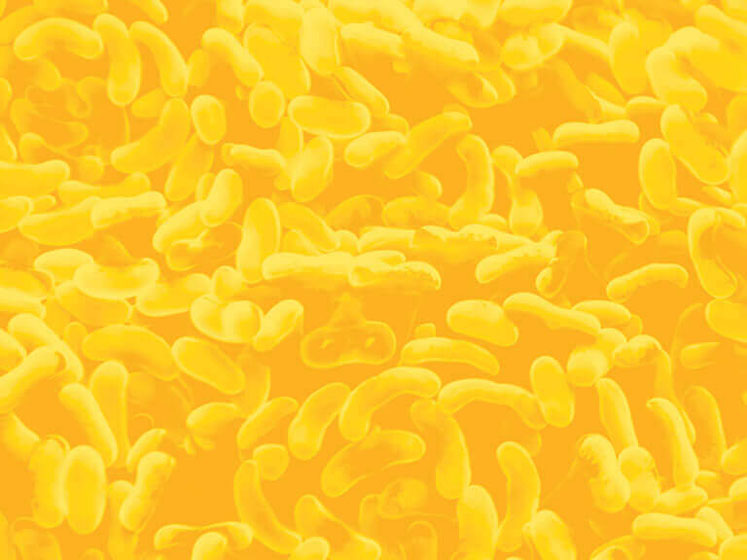First, there is growing interest in sustainability and responsibility for both the future Earth and its inhabitants.1 Secondly, life has become increasingly complex in the last few years; consumers want to preserve their health, but they also want convenience and simplicity in the products they purchase.
This trend has been most obvious in the growth of healthier versions of prepared meals, but it’s also true in the dietary supplement industry.2 According to Natural Grocers’ Top 10 Nutrition Trends for 2022, there is a heightened awareness of our healthspan: the years of life in which we are healthy and free from disease.3 This has resulted in increased demand for foundational supplements that support broad areas of health.
Ingredients with purpose
Skeletal health, particularly joint health, continues to remain a major concern for most consumers, especially those who want to remain active for a lifetime. NEM brand eggshell membrane is Stratum’s premier joint health ingredient.
NEM stands apart from other eggshell membrane ingredients as well as most joint health solutions in general because of the number and breadth of related studies. This research encompasses safety studies, open-label pilot clinical studies, in vitro and in vivo mechanism of action studies and randomised, placebo-controlled clinical trials in both humans and canines.
NEM, along with ESC brand eggshell calcium, is sourced from USDA eggshells that are discarded as part of the production of liquid eggs (used in food processing). Instead of heading for landfills, the eggshells are reclaimed by ESM Technologies and minimally processed, using heat and steam to separate the membrane from the hard outer shell.
NEM is then partially hydrolysed using a gentle enzymatic process to begin the breakdown of a portion of the fibrous membrane. This ensures that it can be effectively digested by the human gastrointestinal (GI) tract.
It also enables a dual mechanism of absorption and metabolism in the body, employing both the gut-mediated immune system and an oral tolerance mechanism to maximise NEM’s effects to reduce proinflammatory substances.4,5
Clinical studies have been a hallmark of research on NEM, which began to expand in two critical ways in 2018 when the first study in truly healthy individuals was published.6
First, the subjects had no regular joint pain, not simply undiagnosed, and exercise was used as a stressor to elicit joint pain and stiffness.
The subjects were also all women. This population demographic is often under-represented in clinical trials; and, for this study, the women were postmenopausal because this is a subgroup with more joint pain, stiffness and disfunction owing to a lack of protection provided by oestrogen.
Finally, the primary endpoint was an objective one. Pain and stiffness were secondary endpoints, but the primary one was any reduction in urinary levels of CTX-II, an objective biomarker for cartilage breakdown and metabolism.
The results of this study were impressive; not only did it show improvements in pain and stiffness immediately after the exercise routine, but also 12 hours later (when joint and muscle repercussions are often experienced).
But it was the findings regarding CTX-II levels that were most noteworthy. CTX-II levels often rise in response to exercise, which stresses joint cartilage, causing some temporary breakdown and is ideally balanced by subsequent rebuilding.

CTX-II levels were assessed at the end of each week of the 2-week study; the expectation was that in the NEM treatment group, CTX-II levels would not rise as much as in the placebo group. However, at the first assessment, levels in the NEM treatment group fell below baseline and this trend continued until the final assessment, demonstrating the remarkable chondroprotective effect of NEM.
A second very similar study has been completed with a broader subject group — encompassing younger male and female participants. The results were very similar to those in the original study, showing post-exercise reductions in pain and stiffness in as little as 1 day and reductions in CTX-II levels below baseline.
NEM has a bland taste and smell and doesn’t react with other dietary or pharmaceutical ingredients, making it an ideal ingredient for use in multiple formats, including conventional food formats such as bars and shakes. Two of Stratum’s other ingredients are worth mention for their uniqueness within the functional foods and dietary supplement market.
A vegan alternative to marine oils
Ahiflower seed oil is a plant-sourced multi-omega ingredient derived from a hedgerow plant native to the UK countryside … and is now cultivated as a non-GMO agricultural crop on small farms. Ahiflower not only stands out for its benefits to the environment and sustainability, but also because of its balance of beneficial omega-3, omega-6 and omega-9 fatty acids.
Ahiflower contains several omega fatty acids that are crucial for optimal health, including two essential ones (meaning the body can’t make them) — alpha-linolenic acid (ALA, an omega-3) and linoleic acid (LA, an omega-6) — as well as an additional omega-3 (stearidonic acid [SDA]), which plays a crucial role in the body’s conversion of ALA to EPA and DHA. SDA also has benefits of its own, mostly because of its positive effects on the inflammatory process.7,8
In addition, Ahiflower oil contains gamma-linolenic acid (GLA), an omega-6 fatty acid that is necessary for brain function, skeletal health, reproductive health and metabolism.9 And, Ahiflower contains oleic acid, the omega-9 fatty acid found in olive oil, which is recognised for its many modulatory effects in the body.10

Several clinical trials have demonstrated Ahiflower’s benefits as a sustainable vegan alternative to marine oils.11,12 The recommended dose of 2.25 g is similar to other omega fatty acid oils. Ahiflower is available in oil and powder formats; and, because it does not have a fishy taste, it can be incorporated into multiple food formats.
Exploiting the microbiome
Interest in the microbiome has prompted considerable research into the micro-organisms that play critical roles regarding how the body functions, especially in the areas of immune and digestive health. As a result, probiotics have become some of the most recognised supplements on the market.
But, they have limitations; most of the ones that are indigenous to the human gut microbiome have very limited gastric survivability. This makes microencapsulation necessary to enable optimal dosing in most individuals.
To complicate matters even more, many have limited shelf stability and are compromised by variations in temperature and water activity. In the past few years, another term has begun to emerge; postbiotics are inanimate microbial cells and/or components that confer a health benefit on the host.
As they are not live micro-organisms, they are not subject to the limitations of survival. In 2021, a published paper by the International Scientific Association of Probiotics and Prebiotics (ISAPP) officially identified and characterised postbiotics.13

Stratum offers a true complex postbiotic ingredient that has been researched and marketed for more than a century. Lactobacillus LB (LBiome) is derived from the heat treatment of two indigenous human species, Lactobacillus delbrueckii and Limosilactobacillus fermentum, along with their fermentation media.
It has been clinically researched in virtually all age groups — from infants to adults — for its safety and benefits in the areas of digestive health and the maintenance of a healthy gastrointestinal environment.
More than a dozen clinical trials support the safety and efficacy of LBiome, many in infants with developing GI tracts.14 Adult studies have demonstrated LBiome’s gut restorative benefits.15 Many of these studies have recently been summarised as part of an independent review article on postbiotics.16
In vitro and in vivo studies have also been a hallmark of LBiome research, revealing information regarding the ways in which it interacts with gut intestinal cells and uncovering its ability to promote the intestinal colonisation of several species of beneficial Bifidobacteria.17
Large quantities of bottled probiotics must be disposed of each year because of their limited shelf stability. Postbiotics such as LBiome enable a considerably longer shelf-life for products with equal or even better safety and efficacy profiles than live probiotics. As the survival of live bacteria isn’t required, LBiome can be used in almost any food format, including beverages.
Conclusion
Ideally the foundation of the nutraceutical industry includes a dedication to supporting health, not just human health, but the well-being of the entire planet and all its inhabitants. Stratum Nutrition is dedicated to that goal.
References
- www.ibm.com/thought-leadership/institute-business-value/report/2022-sustainability-consumer-research.
- www.globenewswire.com/news-release/2022/07/18/2480750/0/en/Prepared-Meals-Market-Trends-Growth-Share-Size-and-Outlook-Till-2029.html.
- www.naturalgrocers.com/health-hotline-article/top-10-trends-2022.
- K.F. Benson, K.J. Ruff and G.S. Jensen, “Effects of Natural Eggshell Membrane (NEM) on Cytokine Production in Cultures of Peripheral Blood Mononuclear Cells: Increased Suppression of Tumor Necrosis Factor-α Levels After In Vitro Digestion,” Journal of Medicinal Food 15(4), 360368 (2012).
- K.J. Ruff, et al., “Eggshell Membrane Hydrolyzates Activate NF-κB In Vitro: Possible Implications for In VivoEfficacy,” Journal of Inflammation Research 8, 49–57 (2015).
- K.J. Ruff, et al., “Eggshell Membrane: Beneficial Effects of Natural Eggshell Membrane Versus Placebo in Exercise-Induced Joint Pain, Stiffness and Cartilage Turnover in Healthy, Postmenopausal Women,” Clinical Interventions in Aging 13, 285–295 (2018).
- J. Sung, et al., “Anti-Inflammatory Effects of Stearidonic Acid Mediated by Suppression of NF-κB and MAP-Kinase Pathways in Macrophages,” Lipids 52, 781–787 (2017).
- K.J. Gagnon, et al., “5-Lipoxygenase-Dependent Biosynthesis of Novel 20:4 n-3 Metabolites with Anti-Inflammatory Activity,” Prostaglandins, Leukotrienes and Essential Fatty Acids 138, 38–44 (2018).
- www.healthline.com/health/gla-fit-for-a-king#gla.
- H. Sales-Campos, et al., “An Overview of the Modulatory Effects of Oleic Acid in Health and Disease,” Mini Reviews in Medicinal Chemistry 13(2), 201–210 (2013).
- N. Lefort, et al., “Dietary Buglossoides arvensis Oil Increases Circulating n-3 Polyunsaturated Fatty Acids in a Dose-Dependent Manner and Enhances Lipopolysaccharide-Stimulated Whole Blood Interleukin-10 — A Randomized Placebo-Controlled Trial,” Nutrients 9, 261 (2017).
- N. Lefort, et al., “Consumption of Buglossoides arvensis Seed Oil is Safe and Increases Tissue Long-Chain n-3 Fatty Acid Content More Than Flax Seed Oil — Results of a Phase I Randomized Clinical Trial,” Journal of Nutritional Science 5(2), 1–12 (2016).
- S. Salminen, et al., “The International Scientific Association of Probiotics and Prebiotics (ISAPP) Consensus Statement on the Definition and Scope of Postbiotics,” Nature Reviews: Gastroenterology and Hepatology 18(9), 649–667 (2021).
- V. Liévin-Le Moal, et al., “An Experimental Study and a Randomized, Double-Blind, Placebo-Controlled Clinical Trial to Evaluate the Antisecretory Activity of Lactobacillus acidophilus Strain LB Against Nonrotavirus Diarrhea,” Pediatrics 120(4), e795–e803 (2007).
- A.L. Tarrerias, et al., “The effect of Inactivated Lactobacillus LB Fermented Culture Medium on Symptom Severity: Observational Investigation in 297 Patients with Diarrhea-Predominant Irritable Bowel Syndrome,” Digestive Diseases 29, 588–591 (2011).
- A. Mosca, et al., “The Clinical Evidence for Postbiotics as Microbial Therapeutics,” Gut Microbes 14(1), e2117508 (2022).
- A.K. Warda, et al., “A Postbiotic Consisting of Heat-Treated Lactobacilli has a Bifidogenic Effect in Pure Culture and in Human Fermented Faecal Communities,” Applied and Environmental Microbiology 87(8), e02459-20 (2021).
